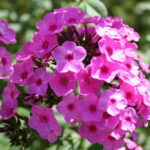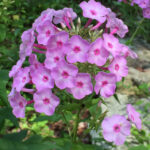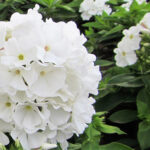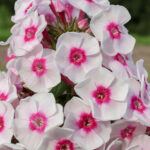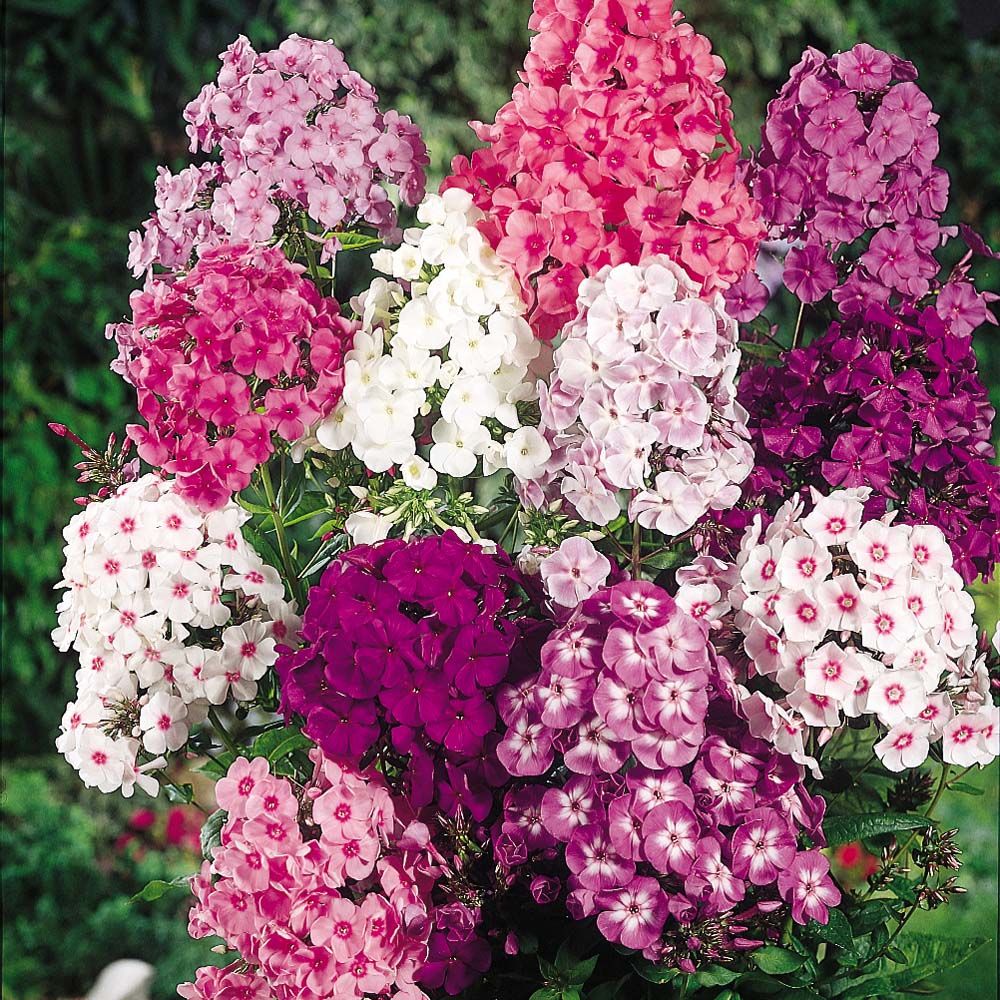
Phlox is a common garden plant that comes in many forms, with nearly 70 species of perennial and annual varieties, from creeping to tall, with flowers that bloom from mid spring through late summer. The three main types grown in gardens are creeping phlox, woodland phlox, and tall phlox. Colors range from white to shades of pink, purple, and blue. Most phlox will bloom in partial shade conditions. The taller varieties make excellent cut flowers and are attractive to pollinators. It is a favorite choice for cottage gardens.
Different types of phlox require slightly different care, but all phlox have some basic care elements in common.
Plant phlox in well-draining, rich, slightly acidic soil.
Plant phlox in an area with partial to full sunlight.
Give phlox space between other plants to promote air circulation to prevent mildew, and water them at the roots, not from above.
Top dress them with compost in the fall (they shouldn’t need any other feritlization).
Most phlox bloom well in partial sunlight but will also tolerate full sunlight. Woodland phlox will bloom in partial to full shade.
Soil
Phlox need well-drained soil that is rich with compost. The soil should be neutral to slightly acidic.
Water
It’s best to water phlox at the base, instead of from above, to help prevent mildew forming on the leaves. Phlox are somewhat drought tolerant but need regular watering during their blooming season.
Temperature and Humidity
Tall phlox may wilt a bit on a hot summer day. Give them cool water at the base if the flowers or stems droop. Humidity can be an issue for phlox because of a tendency for powdery mildew to form on the leaves. This mildew is harmless to the plant but is somewhat unsightly, causing a pale gray bloom to appear on the leaves. The best way to prevent powdery mildew on phlox is to make sure the plants have adequate air circulation, so be sure they have space. If they start to get crowded they can be easily divided.
Fertilizer
Generally phlox don’t need any fertilizer, but if your soil is thin you should add some amendments. Tall and woodland phlox also benefit from a bit of top dressing with compost or composted manure in the fall.
Types of Phlox
There are numerous varieties and cultivars of phlox and a few different types, but the most commonly grown in gardens are creeping phlox, woodland phlox, and tall phlox. There are also annual phlox available in many nurseries.





